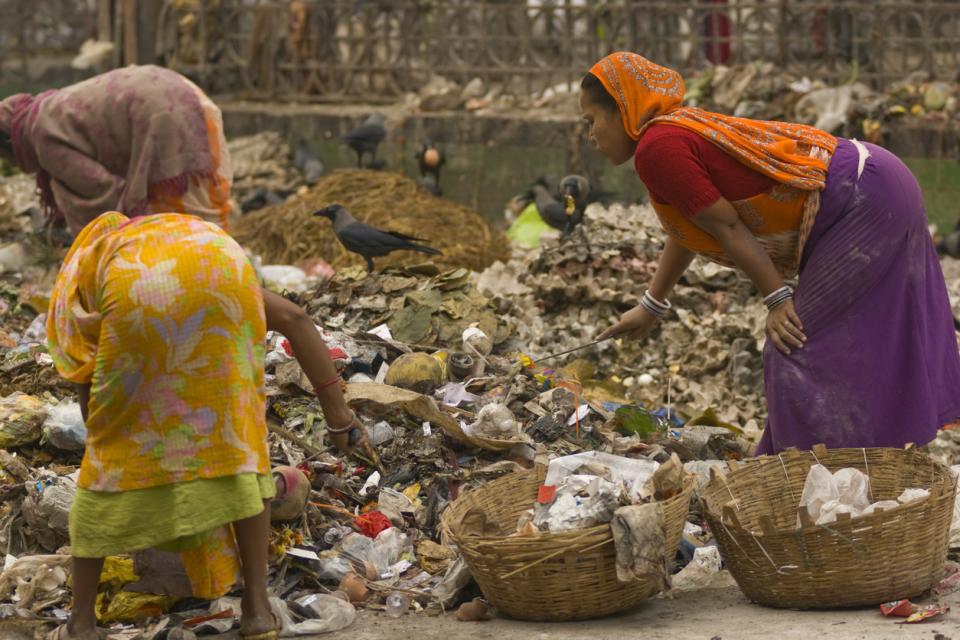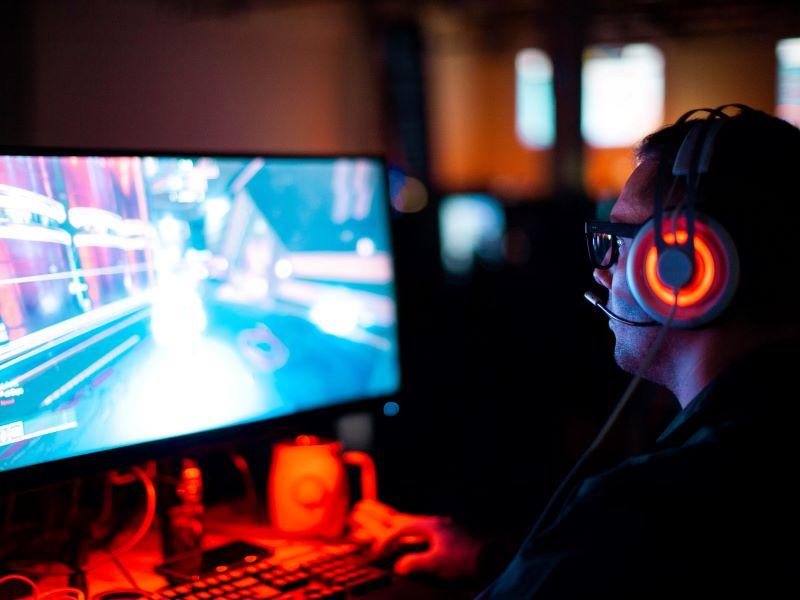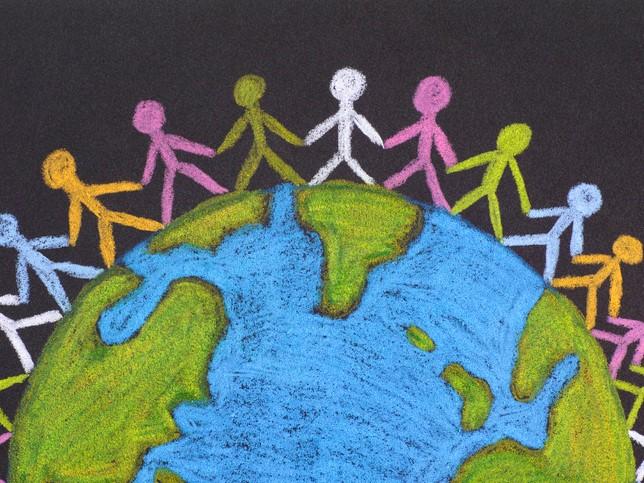Imagine a scenario where students walk into a room and, without any introductions or explanations, they are assigned one of three roles: a team member, a worker or a buyer.
Then they move to their designated work areas, filled with uncertainty, and find lanyards, torn pieces of paper, scissors and cloth bags.
The students who drew “team member” roles learn that they must make as much money as possible by working to make products with the paper. Anything not sold and all other materials are then waste.
The “workers” are told their aim is to meet their given weekly household costs by picking up the waste generated by the teams and selling it to the buyers.
And the “buyers” are tasked to make as much money as possible by buying the waste from the workers and selling it to the recycler (a role played by a facilitator) for a higher margin.
Over the next two hours, students become immersed in their roles, moving around and completing their tasks. Without knowing it, these students are acting out the key roles in India’s informal urban waste-management system. And although it’s just a simulation, the emotions students feel during the activity are genuine. In the facilitated debrief after the role playing, students are silent and reflective as they see the faces and names of the waste pickers they had been playing. This is the moment when, for many, it goes beyond just a game.
Through experiential learning, such as this simulation, and also role play and gamification, global development challenges that often appear vast, distant and overwhelming can be brought into a safe classroom environment.
- How to teach through the lens of the Sustainable Development Goals
- Experiential education through a simulated summit to combat human trafficking
- Serious play: building knowledge with Lego blocks
The Deloitte Millennial Survey 2019 showed that 47 per cent of Gen Z have ambitions to make a positive impact on the world. This active approach, supported by in-depth debrief facilitation, builds students’ confidence in believing they can contribute to impactful initiatives. We often hear students say things like: “This made the UN SDGs [Sustainable Development Goals] come alive. They feel real and I feel I can make a difference.” And: “This has made me consider other avenues for my future career”, as well as: “Why don’t we learn more like this?”
Experiential activities also take students’ learning beyond intellectualisation of the issues and help them to make sense of their complexities. When they’re faced with real-world challenges in a simulation environment, students don’t jump to find solutions; they first build empathy with the people for whom this situation is a reality. And it’s skills such as empathy and social awareness that cannot (currently) be replicated by generative AI systems, making experiential learning even more vital to students’ career outcomes and in nurturing the next generation of change-makers and world leaders.
Our post-participation surveys show that 95 per cent of students want to engage with these issues further through research, internships or volunteering. Our role is then to open these pathways for them.
Here are steps you can take to build your own simulation, referencing our partner ProjectCHAKRA’s simulation experience:
Choose a real-world challenge
This should be something you have direct experience of working in as you’ll need to know the system well in order to create a simulation. A challenge that involves real people works best because people connect with people, and the aim here is to make your students feel connected to the individuals affected by the issue.
For example, the informal urban waste-management scenario was based on ProjectCHAKRA co-founders’ extensive work in India with a social enterprise that supports women waste pickers.
Identify the key stakeholders involved in the challenge or system
Keep things simple. Pick the stakeholders who make the most impact in the issue you’re aiming to highlight and map out how they are connected.
The key stakeholders we identified for the informal urban waste management system were:
- team members: everyday householders who generate waste on a daily basis
- workers: women waste pickers who pick up this waste from the roadside
- buyers: scrap shop dealers who buy the waste from these women.
By keeping it simple, you help students easily engage with the activity and know how their assigned role fits into the system.
Translate real life into the classroom using gamification
This is the creative part. Give your characters (key stakeholders) an aim (their “why”) and tell them what they have to do to achieve this aim, which should mirror what happens in real life.
In our example, the team members were producing sellable products to make money, the workers were collecting waste to cover their household costs, and the buyers were selling this waste at a higher margin also to make money.
Add detail
Once you have the economy of the system in place, the next phase is to add details to every aspect of the simulation to make it as realistic as possible.
For example, in real life as the women pick up more waste, the bag they carry gets heavier. To bring this dynamic into the classroom, we add weights to the workers’ bags as the simulation progresses.
Facilitate debriefs to support personal and collective reflection
The simulation game play is only half the experience. The remaining consists of a facilitated debrief process that gives time for students to self-reflect on their behaviours, emotions and dynamics of what they have experienced.
We go through four reflective phases that build on each other:
- Objective To begin, establish the facts of the challenge and engage the five senses by asking questions such as: what did you do? What did you see? What did you hear? This is an opportunity for all participants to understand everyone’s experience of the game.
- Reflective Next, encourage students to share their personal experiences of the activity to discover and share how they feel.
- Interpretive This is the time to explore how what participants experienced in the classroom translates to the real world.
- Decisional Finally, it’s time to take action. The overarching question you put to your group is: “So, what are we going to do about this?”
In our example, some students shared they would be more mindful of the everyday systems they lived in to see the whole from the parts. Others committed to volunteering locally and some students felt inspired to go to India to work on the ground with the social enterprise that supports these women.
At the University of Surrey, this engagement has opened opportunities to strengthen our international strategy. Following this experiential workshop, our students participated in a social leaders programme in India to continue to develop their global citizenship.
Anand Mistry is co-founder of ProjectCHAKRA. Kat Mack is student enterprise manager, and Shelini Surendran is associate dean (international) of the Faculty of Health and Medical Sciences, both at the University of Surrey.
If you would like advice and insight from academics and university staff delivered direct to your inbox each week, sign up for the Campus newsletter.




comment